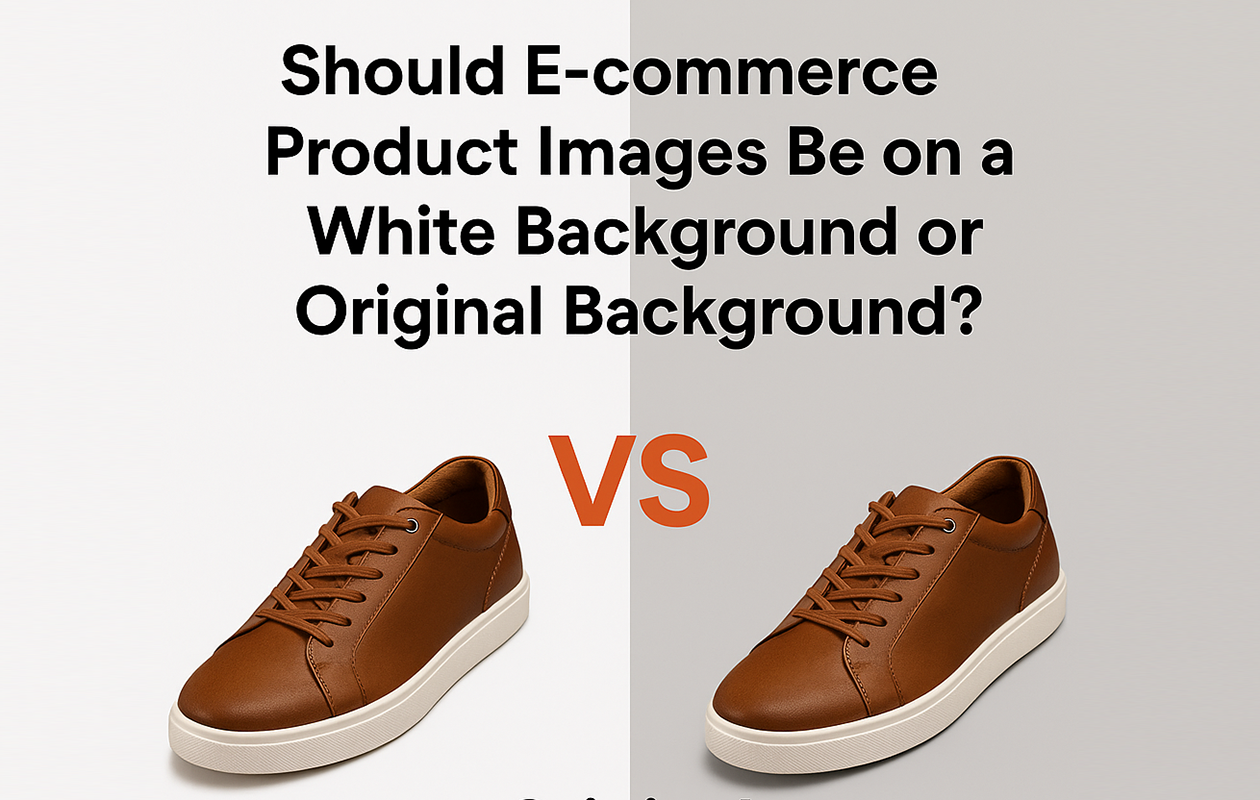Should E-commerce Product Images Be on a White Background or Original Background?
July 14, 2025

In the competitive landscape of e-commerce, product presentation can be the key to converting a browser into a buyer. One of the most debated aspects of product photography is the background: should product images be displayed on a clean white background or retain their original setting?
White Background: Clean, Clear, and Universal
A white background is widely regarded as the industry standard, especially for marketplaces like Amazon, eBay, and Walmart. Here’s why it works:
- Consistency: White backgrounds provide a uniform look across a website or marketplace.
- Focus on the Product: No distractions – the customer sees only the product.
- Professional Appearance: Clean visuals boost brand trust and professionalism.
- Faster Loading Times: Simpler images load more quickly, improving user experience.
- Better Compatibility: A white background fits seamlessly with most e-commerce platform layouts.
Original Background: Lifestyle and Storytelling Appeal
On the other hand, keeping the original background or using lifestyle scenes can be very effective in brand storytelling and marketing:
- Contextual Relevance: Shows the product in use, helping customers imagine owning it.
- Aesthetic Branding: Lifestyle imagery enhances a brand’s unique voice and style.
- Better for Social Media: Original or styled backgrounds often perform better on platforms like Instagram and Pinterest.
- Emotional Connection: A well-set scene can evoke emotions and create a narrative around the product.
What’s the Best Practice?
The best strategy often lies in combining both approaches:
- Use white backgrounds for product listings, especially on marketplaces and product detail pages.
- Use lifestyle/original backgrounds for marketing, banners, email campaigns, and social media.
Final Thoughts
While white backgrounds are perfect for consistency and professionalism, original or lifestyle images are excellent tools for brand engagement and emotional appeal. By striking a balance between both, e-commerce brands can create a comprehensive visual strategy that converts and captivates.
If you’re looking to optimise your e-commerce product imagery, make sure your image post-production team can handle both styles with precision and creativity.

 English
English
 Deutsch
Deutsch
%401x.svg)
